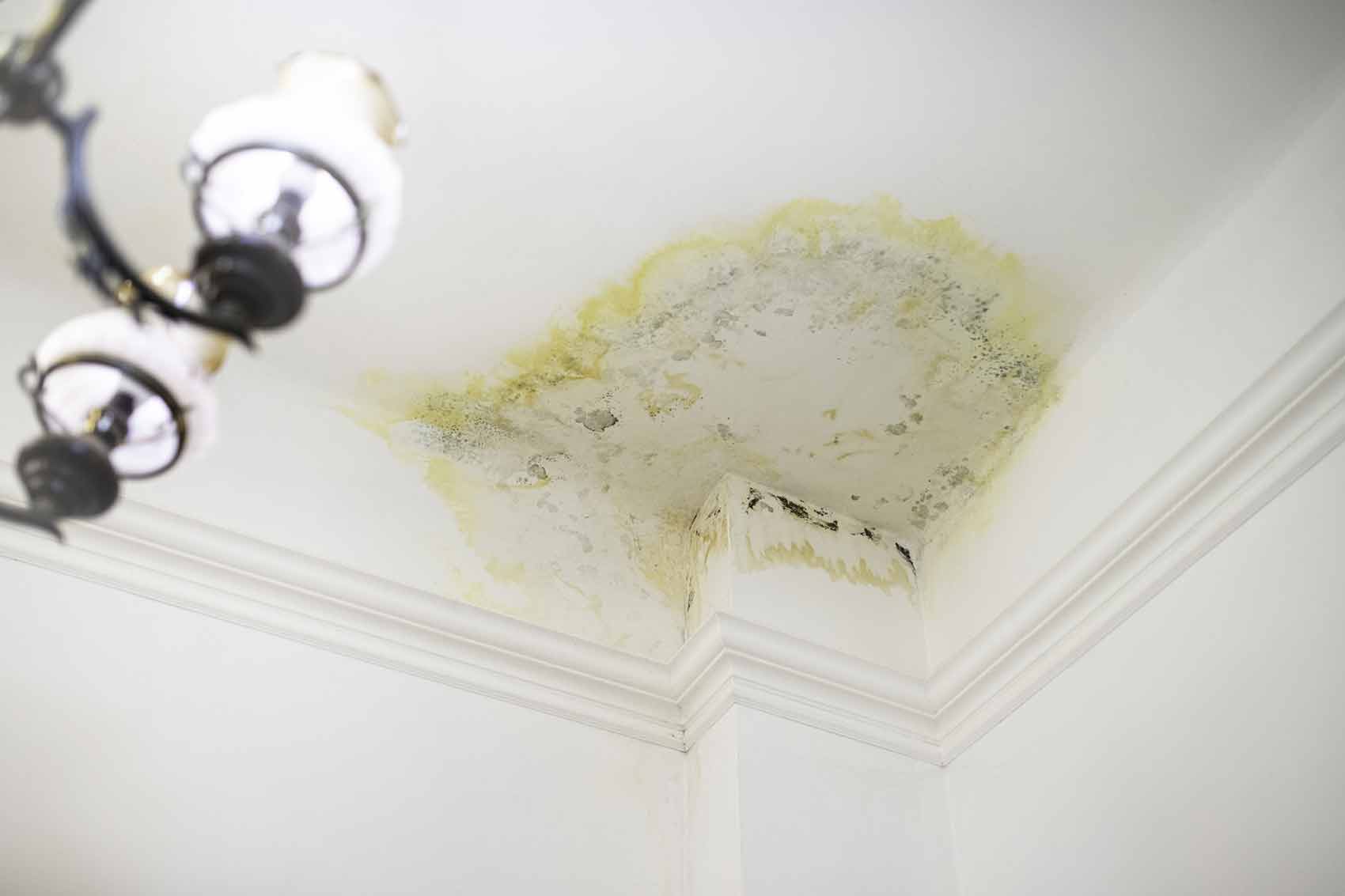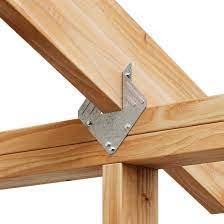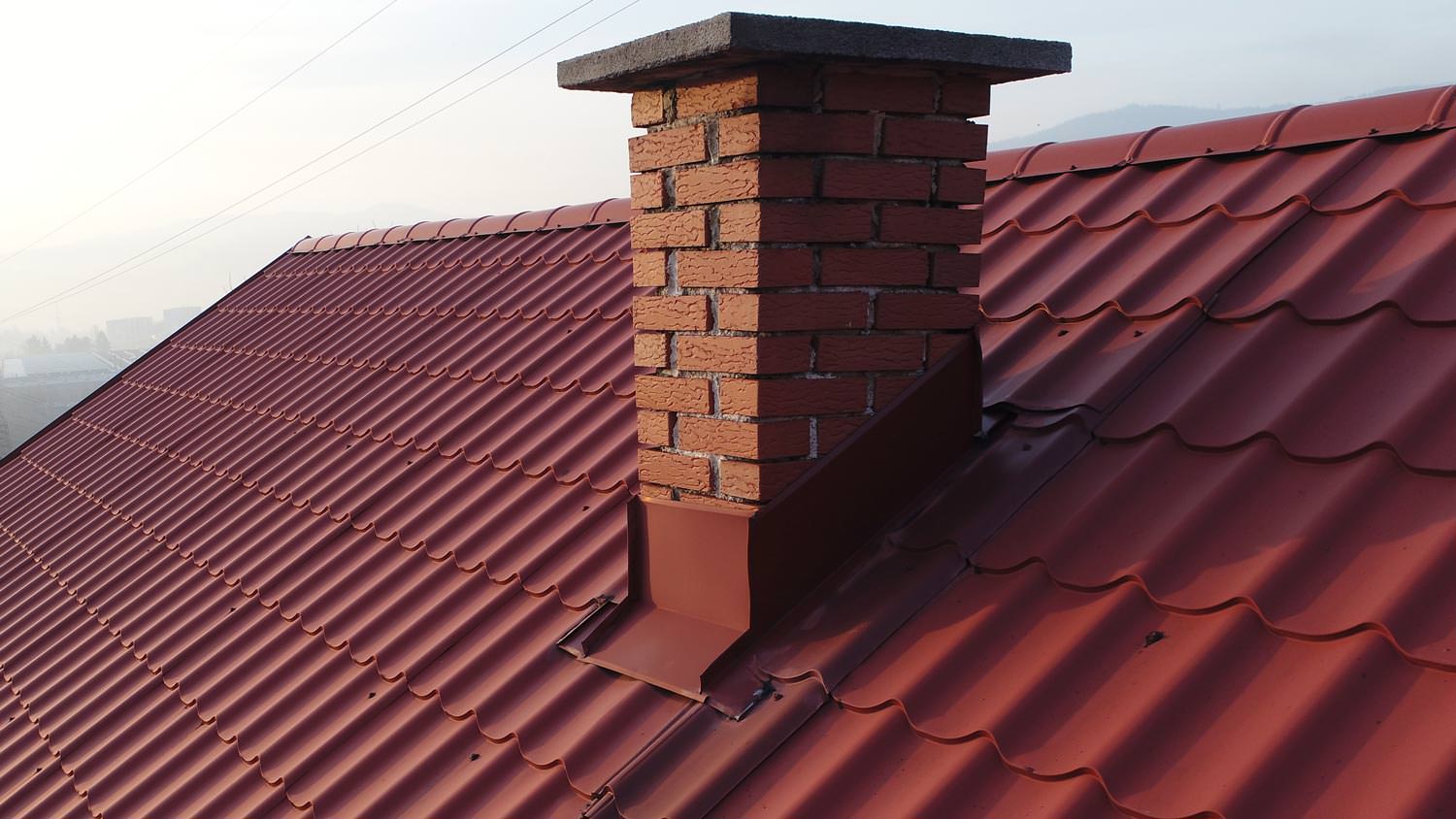When mold appears on your bathroom ceiling, it’s more than just an eyesore. It signals moisture trouble, poor ventilation, or a small leak somewhere above. In this post, HUDCO Roofing explains clearly how to remove mold from bathroom ceiling—and how hiring a professional like us can make sure it doesn’t come back.

Why Mold Grows on Bathroom Ceilings
Before we jump into cleaning, it helps to see why mold shows up in that spot:
- Bathrooms are humid. Steam from showers raises moisture levels.
- Poor ventilation or no exhaust fan traps moisture.
- Leaks or roof issues above can leak water into ceiling materials.
- Condensation collects on cooler surfaces (like ceiling drywall).
- Once spores land on a damp surface, they settle, grow, and darken.
If mold is visible, it’s already in the “active growth” stage. You need to act, but also correct the root cause so it doesn’t return.
What to Know First: Safety & Scope
Before attempting to clean mold, here are key safety and scope guidelines:
- If the moldy area is larger than about 10 square feet, it’s best handled by professionals.
- Some people are more vulnerable (asthma, weak immune system). They should avoid doing mold cleanup themselves.
- Always protect yourself: use an N95 respirator mask, gloves, goggles, and keep skin covered.
- Don’t mix bleach with other cleaning agents like ammonia, that generates dangerous fumes.
- Follow the rule: clean first, then sanitize. On porous surfaces, mold can’t always be fully killed, removal is essential.
With safety in mind, we can move to a step-by-step process.
Step-by-Step: How to Remove Mold from Bathroom Ceiling

Here’s a clear sequence you or your contractor can follow to get rid of mold on a bathroom ceiling:
-
Prepare and isolate the work area
- Close the bathroom off. Use plastic sheeting over doorways to prevent spores from spreading.
- Open windows, turn on any exhaust fan, and set up a fan blowing air outside.
- Remove fixtures or items (light fixtures, exhaust covers) near the mold so you can reach the surface cleanly.
-
Fix any moisture or leak problems first
- If there is a roof leak, plumbing issue, or condensation, stop that first.
- Even a small drip or hidden roof flashing problem can keep feeding mold.
-
Choose your cleaning solution
- A common and safe method is cleaning mold with vinegar: full-strength white distilled vinegar works because it is mildly acidic and can kill many mold species.
- Alternatively, use a mix of dish soap and warm water or a mild detergent for an initial scrub.
- If needed, a diluted bleach solution (1 cup bleach to 1 gallon of water) can be used after cleaning, but only on nonporous ceiling surfaces, and only if ventilation is excellent. Never apply bleach on porous drywall or plaster first.
-
Scrub the moldy area
- Use a soft sponge or cloth initially, switch to a soft brush for textured ceilings.
- Work gently but thoroughly until you visibly remove mold stains.
- Rinse with clean water and blot dry.
-
Dry completely
- Use fans, dehumidifiers, or heat to dry the ceiling fully in 24–48 hours.
- Moisture left behind encourages mold to come back.
-
Inspect and repair damaged material
- If drywall or plaster is badly stained or softened, that section might need to be cut out and replaced.
- Replace or repair any insulation or backing material that was compromised.
-
Repaint or reseal (if needed)
- Once fully cleaned and dried, apply mold-resistant primer and paint.
- Use paint labeled for bathrooms or high humidity.
By taking those steps, your mold cleanup is much more likely to succeed. Doing it half-heartedly often results in mold just returning.
Tips to Prevent Mold on Bathroom Ceiling (So You Don’t Ask “how to get rid of mold on bathroom ceiling” again)
Here are good practices to keep mold away:
- Always run the bathroom exhaust fan during showers, and for 30 minutes after.
- Keep humidity levels under 50% using dehumidifiers if needed.
- Use tempered water and proper insulation so condensation doesn’t form.
- Fix roof leaks or roof flashing near this area promptly (that’s where HUDCO Roofing’s expertise kicks in).
- Use paint rated for mold resistance and ensure ceilings are smooth and washable.
- Clean regularly: wipe down ceilings, especially corners, where mold tends to creep.
These preventive steps help reduce the chance you’ll face mold problems down the line.
When to Call HUDCO Roofing — Why Professional Help Pays Off
Removing mold yourself might work for small spots, but there are times when roofing and ceiling expertise is necessary:
- If the mold returns despite your cleaning efforts, there may be a hidden roof leak, poor flashing, or venting issue.
- If the ceiling substrate (drywall, plaster) is water-damaged, it may be safer to replace it properly.
- If you live in Baton Rouge, consider our Roofer in Baton Rouge, LA services.
- If your home is in Lafayette, check out our Roofing Company in Lafayette, LA expertise.
- We also serve clients in New Orleans via Roofing Company in New Orleans, LA, and in Shreveport via Roofing Company in Shreveport, LA.
- For Lake Charles, we cover similar services through our regional links (often grouped under New Orleans area).
As a full roofing and exterior services company, HUDCO Roofing offers more than just mold cleanup. If roof repair is needed to stop leaks, we handle it via our Roof Repair service. If the roof is beyond patching, we can perform a Residential Roof Replacement. For stronger, wind-resilient roofs, HUDCO is certified in Fortified Roofing.
When mold is linked to roof damage after storms, our Emergency Roof Repair team responds fast. If insurance is involved, we assist with Insurance Claims to make sure repair costs are handled correctly. For homeowners needing budget help for larger roof jobs, we offer Financing Options.
We also tackle Commercial Roof Repair when mold issues stem from flat roofs or leak sources above commercial bathrooms. Because we work across Louisiana, if you’re in any of our service zones, we can come inspect and provide a plan.
Contact HUDCO Roofing in Louisiana
Figuring out how to remove mold from bathroom ceiling isn’t magic—it’s about cleaning, repairing, and preventing moisture. If you see mold, act quickly. But remember: even the best cleaning fails if moisture keeps coming back.
If you want peace of mind, call HUDCO Roofing. We’ll inspect your roof and ceiling, find leaks or vent problems, and carry out a lasting repair. Serving Baton Rouge, Lafayette, New Orleans, Lake Charles, and Shreveport, we blend roofing and mold control expertise so your bathroom stays clean and dry.
Call us today at (318)-584-0044 or visit our Contact Page to schedule a free inspection. Let HUDCO Roofing handle the work so you don’t worry about mold again.
FAQ (Frequently Asked Questions)
Q: Will vinegar fully kill mold on my ceiling?
A: Vinegar helps kill many species of mold and is effective on smooth, nonporous surfaces. But if the ceiling is porous, spores can remain. Always clean, then dry, and consider replacement when needed.
Q: Can I just paint over the mold?
A: No. Paint over mold only makes it worse. You must clean and remove mold first; otherwise paint will trap moisture and peel.
Q: What if mold returns after cleaning?
A: That suggests moisture is still reaching that area. Likely culprit: a roof leak, condensation, or poor ventilation. That’s when calling HUDCO Roofing is smart — we can trace and fix the source.
Q: Can we avoid mold entirely?
A: You can’t eliminate mold spores—they float in air everywhere. But if you control moisture so spores can’t grow, mold stays dormant. Good ventilation, prompt repairs, and proper materials help a lot.



